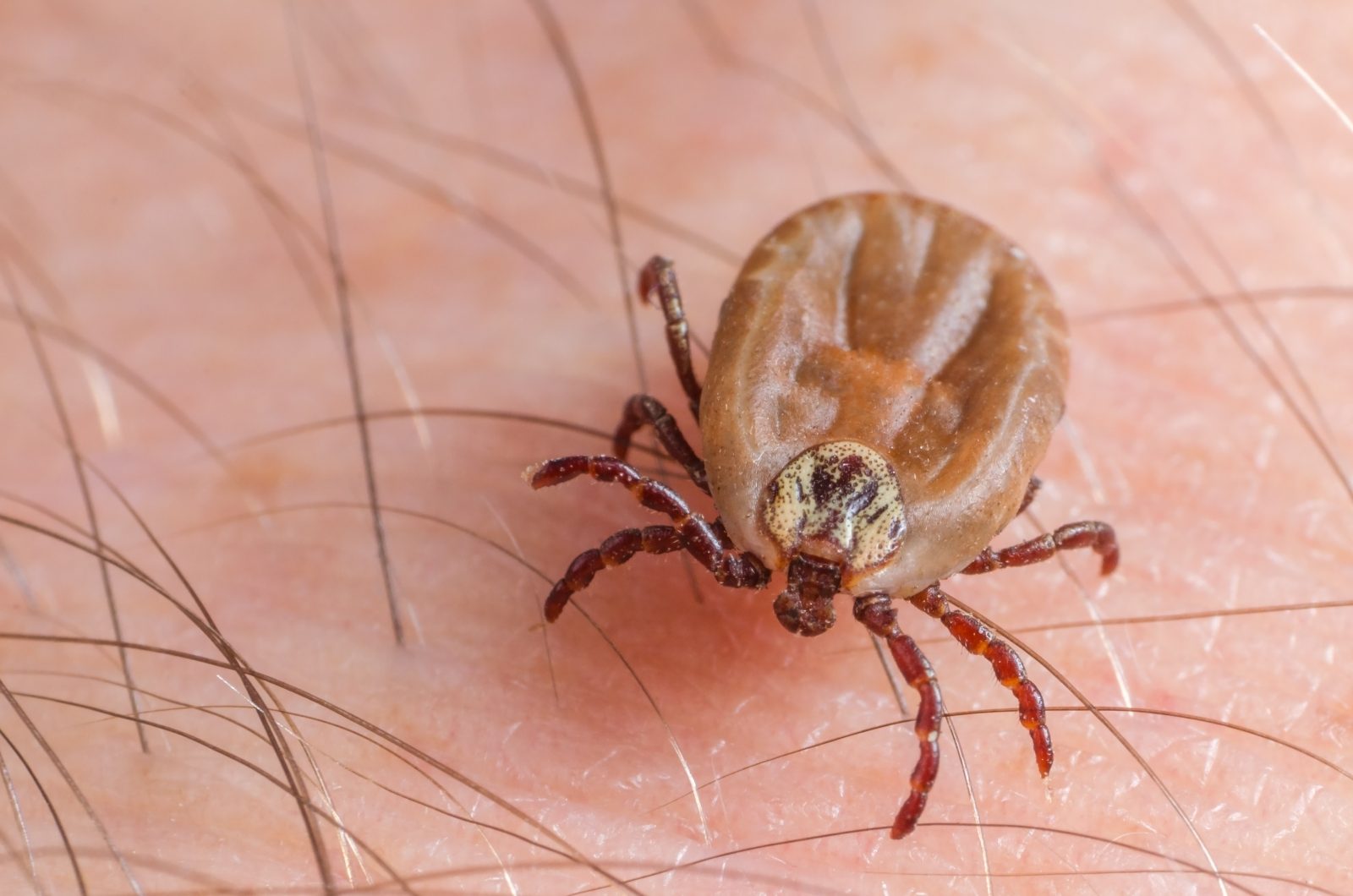Babesiosis, often overlooked amidst other tick-borne illnesses, is a compelling tale of nature’s hidden dangers. This article dives into the shadows cast by these parasites, exploring their impact on health and the steps you can take to safeguard against them.
Join us on a journey through the mysteries of babesiosis and uncover how awareness and precaution can turn the tide against this formidable foe.
What Is Babesiosis?
Babesiosis is a rare but potentially life-threatening infection that targets red blood cells. This disease is primarily spread through tick bites and is caused by tiny parasites from the Babesia genus, with Babesia microti being the most common type affecting humans.
These parasites are transmitted to humans through the bite of an infected deer tick, also known as the black-legged tick (Ixodes scapularis).
The life cycle of Babesia involves two hosts: a tick and a mammal. The ticks become infected when they feed on a mammal host that carries Babesia parasites, such as rodents or deer. The parasites then multiply within the tick and can be transmitted to humans through a subsequent tick bite.
The ticks are most active during the warmer months, typically from May to September, which corresponds to the peak season for babesiosis cases.
Babesiosis Transmission and Risk Areas
Babesiosis typically occurs during the warmer months when ticks are most active.
The ticks carrying Babesia parasites have been predominantly found in specific regions such as Block Island in Rhode Island, Fire Island, Shelter Island, and eastern Long Island in New York, Martha’s Vineyard and Nantucket in Massachusetts, and coastal areas of New Jersey.
However, cases have also been reported in other states, including California, Connecticut, Delaware, Maine, Minnesota, and Wisconsin, and even in parts of Europe.
Apart from tick bites, babesiosis can be transmitted through contaminated blood transfusions or from an infected pregnant mother to her baby during pregnancy or birth.
Babesiosis Symptoms and Complications
Symptoms of babesiosis can appear between 1 to 8 weeks after infection. In some cases, individuals may not exhibit any symptoms.
When symptoms do occur, they can range from mild to severe and may include:
- Fever and Chills: Sudden onset of high fever and chills.
- Fatigue: Severe tiredness that can persist for weeks or months.
- Muscle and Joint Pain: Generalized body aches and pains.
- Headache: Persistent and often severe headaches.
- Sweats: Night sweats are common, leading to discomfort and sleep disturbances.
- Anemia: Due to the destruction of red blood cells, leading to symptoms like shortness of breath, pallor, and fatigue.
A serious complication of babesiosis is hemolytic anemia, where red blood cells are destroyed faster than they can be produced. This condition can lead to a cascade of health issues, given the essential role red blood cells play in delivering oxygen throughout the body.
Symptoms of hemolytic anemia include:
- Confusion: Reduced oxygen delivery to the brain can cause cognitive impairment and disorientation.
- Dark-Colored Urine: The breakdown of red blood cells releases hemoglobin into the bloodstream, which is then filtered by the kidneys, leading to dark or tea-colored urine.
- Dizziness: Anemia can cause lightheadedness and balance issues due to insufficient oxygen supply to the brain.
- Heart Murmur: Changes in blood viscosity and flow dynamics due to anemia can cause an abnormal heart sound, known as a murmur.
- Rapid Heart Rate: The heart compensates for reduced oxygen-carrying capacity by pumping faster, trying to deliver more oxygen to tissues.
- Swollen Spleen and Liver: These organs work overtime to filter out the damaged red blood cells, leading to enlargement and potential discomfort or pain.
- Very Pale Skin: Reduced red blood cell count can lead to pallor, particularly noticeable in the face, inner eyelids, and nail beds.
- Weakness: General fatigue and muscle weakness occur as muscles receive less oxygen.
- Jaundice: The yellowing of the skin, eyes, and mouth results from the accumulation of bilirubin, a byproduct of red blood cell breakdown.
High-Risk Groups for Severe Symptoms
- Elderly Individuals: The aging immune system and potential comorbidities such as cardiovascular disease make older adults more susceptible to severe complications.
- Individuals Without a Spleen (Asplenia): The spleen plays a critical role in filtering out old or damaged red blood cells and fighting certain infections. Without it, the body’s ability to manage babesiosis and hemolytic anemia is significantly compromised.
- Compromised Immune Systems: Individuals with weakened immune systems, whether due to chronic health conditions like HIV/AIDS, cancer treatments such as chemotherapy, or immunosuppressive medications used for autoimmune diseases or organ transplants, are at heightened risk. Their bodies are less able to fight off the Babesia parasite and recover from the destruction of red blood cells.
Diagnosis
Diagnosis of babesiosis involves blood tests to detect the presence of Babesia parasites in the blood. Doctors may use a microscope to examine blood samples and might also order additional blood tests to exclude other tick-borne diseases with similar symptoms, such as anaplasmosis or Lyme disease. It is possible to have co-infections of Lyme disease and babesiosis.
Treatment and Prevention
For asymptomatic cases of babesiosis, treatment may not be necessary. Symptomatic cases typically require a combination of medications. Common treatments include atovaquone paired with the antibiotic azithromycin or quinine combined with clindamycin.
Preventing babesiosis primarily involves avoiding tick bites. Here are some key prevention strategies:
- Avoid areas with overgrown grasses and leaf piles where ticks are prevalent.
- Wear protective clothing such as long pants tucked into socks and long-sleeve shirts when in tick-prone areas.
- Opt for light-colored clothing to easily spot ticks.
- Use insect repellents containing DEET on both skin and clothing.
- Thoroughly check clothing and pets for ticks before entering the home.
- Perform a full-body tick check using mirrors after being outdoors.
- Remove any attached ticks promptly using pointed tweezers.
Bottom Line
Babesiosis is a serious but preventable disease. Awareness of the symptoms and understanding the importance of early detection and proper tick prevention can significantly reduce the risk of infection.
If you experience any symptoms following potential exposure to ticks, consult a healthcare provider promptly and mention any recent travel to areas where ticks are common.
Through vigilant prevention and timely medical attention, the impacts of babesiosis can be managed effectively.















Find Us on Socials